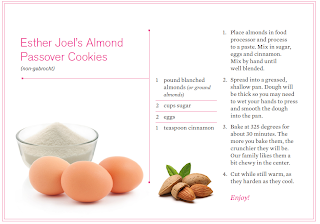I was attending a conference last week (imagine that) and
I sat through some great sessions. In one of them, the presenter cited recent
(2012) research that said only 7% of your donors read the communications you
send thoroughly. I was not surprised that the number was low, but I was a bit
miffed at exactly how low. Sometimes when I open my mail and email I know why it's so low, if this were a
measure of success we would receive an F-.
Are we giving our donors things they want to read, things
that draw them in and make it worth their time? Have we asked them what they
want to read and in what format they want to read it in? If not, are we just
throwing messaging into a dark abyss and hoping they catch it and read it?
Old wisdom of direct mail and publications says time and
time again that the longer the appeal letter, the more people give. There are
even whole books on this topic... Most of this science comes from the nonprofit
world, not higher ed or healthcare. Would this still hold true now? For your audience? I would beg to argue that point. In an
information overloaded society, if you send me a 4 page solicitation letter,
there's no chance I'm reading it. But if you send me a postcard with a telling
image and a concise message, I'll take action. What do you think?
I think that the times have changed greatly and we
haven't changed with them. How have you
changed your communications to adapt to the changing landscape of readership?
Do you know what your donors are reading? Have you asked them? Why not?
One effective thing to do is to ask your donors their
preferred communication channel (mail, phone, email, social media) and speak to
them through that channel primarily. Not eliminating the others, but being
intentional about how you group your donors, other than giving amount. Or
bucket them all based on age, assuming that most if not all 35 or 85 year olds
behave the same, a shallow assumption indeed.
There's a shredder beneath our mailboxes in my apartment
building for a reason. As I came back from my recent trip, my held mail
contained 12 pieces from charitable organizations, all but one were in letter
format and also were thick... (Insert your favorite shredding noise here) one
was a well done graphic postcard that had an image of students holding up the
letters Thank you and a great short message. Thanks UMass Boston, your next
gift is coming soon because your postcard is on my fridge. For those nonprofits
who sent me lengthy letters and "gifts" like address labels, yours
met an evil shredder named Sal (what, you don't have a name for your shredder?)
He's a hungry little thing. When he struggles to shred your mailing and groans
in protest, I think we have a problem (and I sincerely hope you didn't send me
a nickel, Sal hates Nickels, spits them back at my head). Nothing like a flying
nickel or saint token coming back at you from Sal the shredder to wake you up!
So how do we effect change? How do we prove to those
experts that the old format of lengthy letters and "gifts" is a ruse
and we see right through it. Ask them the last time they have verifiable data
with YOUR population, ask your folks. Also, every time a communication comes to
you for review, ask yourself if you would turn it over or open it and read it.
Who's your audience? Is this putting your best foot forward? If not, begin a
discussion about change.
If you need ideas, I have many and will collect more if
you need them. For now, I'll leave you with two of our favorites here that make
us particularly proud.
Enjoy!
I would love to hear your thoughts on this topic.
Cheers,
Lynne





I love the recipe post card- what a wonderful idea! I am also surprised at how low the read rate is, though I knew it would be low. I am hoping we can continue to improve our communication to make it more appealing to our audiences!
ReplyDeleteI'm curious to know what kind of feedback you got from the second piece inviting donors for a tour or to meet with a student. SOunds like a great idea!
ReplyDeleteWe receive great feedback from all of our postcards. this one is especially donor focused and effective because it allows them to engage on their time and calendar.
ReplyDelete